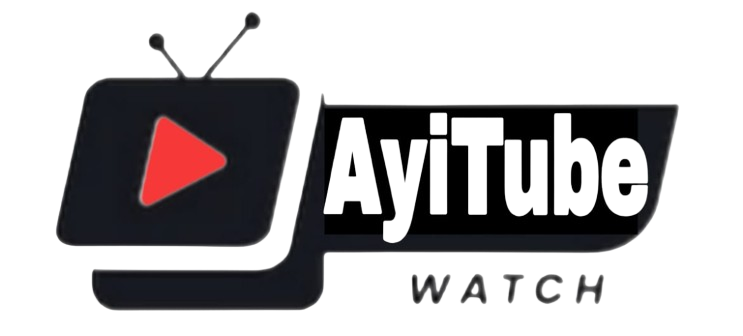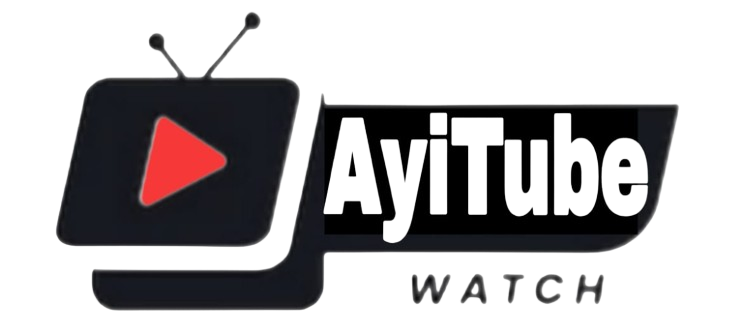U.S. Medical Coding Market: Transforming Healthcare Data into Actionable Insights
1. Introduction
The U.S. Medical Coding Market plays an integral role in the country’s healthcare ecosystem by translating complex medical diagnoses, procedures, and equipment into standardized alphanumeric codes. These codes are essential for accurate billing, insurance reimbursement, and the maintenance of detailed patient records. As healthcare services expand, and digital health technologies become more pervasive, the need for efficient and compliant coding systems has grown exponentially.
In recent years, the market has witnessed rapid transformation driven by digitalization, the shift toward value-based care, and the increasing focus on data analytics. The growing volume of healthcare data and the need for precision in medical documentation have made coding indispensable to hospitals, clinics, and insurance companies across the United States. As the healthcare industry continues to evolve, medical coding has emerged as a critical pillar supporting operational efficiency, compliance, and revenue integrity.
Review comprehensive data and projections in our U.S. Medical Coding Market report. Download now: https://www.databridgemarketresearch.com/reports/us-medical-coding-market
2. Market Dynamics
Market Drivers
Several factors are fueling the growth of the U.S. Medical Coding Market. The expanding healthcare infrastructure, coupled with the rising number of insured individuals, has led to a surge in medical billing activities. The transition from manual to automated coding systems has further boosted efficiency and reduced errors. Moreover, the growing emphasis on regulatory compliance — particularly adherence to Centers for Medicare & Medicaid Services (CMS) guidelines — has made precise coding a legal and financial necessity. The widespread adoption of electronic health records (EHRs) and digital claims systems has also created a favorable environment for coding software and services.
Market Restraints
Despite significant growth, the industry faces a few constraints. One of the main challenges is the shortage of skilled medical coders, especially those proficient in specialized areas such as oncology, cardiology, and radiology. Frequent updates to coding systems, such as ICD and CPT, also demand continuous education and certification, which can be costly and time-consuming. Additionally, small healthcare facilities often face financial limitations in adopting advanced coding technologies, slowing overall market penetration.
Opportunities
The emergence of artificial intelligence (AI), machine learning, and natural language processing (NLP) technologies presents tremendous opportunities for the market. Automated coding platforms capable of analyzing unstructured clinical data are reducing manual workloads and improving accuracy. Furthermore, the rising popularity of remote and outsourced coding services has enabled healthcare providers to optimize resources and reduce operational costs. These opportunities are expected to drive robust growth in the coming years.
Trends
Key market trends include the growing implementation of ICD-11, the adoption of robotic process automation (RPA) for billing, and the expansion of AI-assisted coding tools. As healthcare organizations increasingly rely on data analytics for decision-making, coding is becoming more intertwined with business intelligence systems. There is also a rising trend toward integrating medical coding with telehealth platforms, enabling seamless billing for virtual consultations.
3. Market Segmentation Analysis
The U.S. Medical Coding Market can be segmented based on type, component, and end user.
By Type:
The market is categorized into ICD (International Classification of Diseases), CPT (Current Procedural Terminology), and HCPCS (Healthcare Common Procedure Coding System). ICD codes dominate the market due to their critical role in diagnosis and reimbursement processes. CPT codes are widely used for procedural documentation, while HCPCS codes address medical supplies and equipment billing.
By Component:
The market is divided into software and services. The services segment holds a major share, driven by the growing demand for outsourced coding services that ensure compliance and accuracy. Meanwhile, the software segment is gaining momentum due to increased automation and integration with EHR systems.
By End User:
Hospitals represent the largest end-user segment, given their high patient volumes and extensive billing requirements. Clinics and physician offices also contribute significantly, particularly as they adopt digital coding solutions to streamline operations. Insurance companies, diagnostic centers, and third-party billing organizations form other important end-user categories.
4. Regional Insights (U.S. Focus)
The U.S. Medical Coding Market exhibits strong growth across key states including California, Texas, Florida, and New York. These regions benefit from advanced healthcare infrastructure, large patient populations, and a high concentration of healthcare providers. California leads the market due to its strong focus on digital healthcare solutions and early adoption of AI-based coding systems. Texas and Florida are also major hubs for medical billing services, particularly for outsourced and remote coding. New York’s emphasis on compliance and data governance further drives demand for coding accuracy and standardization.
Smaller states are witnessing growth as telehealth and remote coding opportunities spread across the nation. Regional variations in healthcare reimbursement models, payer networks, and insurance coverage also influence market dynamics.
5. Competitive Landscape
The competitive landscape of the U.S. Medical Coding Market is defined by both established corporations and emerging technology providers. Major players include 3M, Optum, nThrive, Aviacode, and Dolbey, all of which have developed advanced software and services for healthcare organizations. These companies focus on improving coding accuracy, compliance, and revenue cycle management through innovative tools.
Strategic partnerships and acquisitions are common as companies seek to enhance their technological capabilities and expand market reach. AI-driven startups are also entering the field, offering specialized solutions such as real-time coding validation, predictive analytics, and integrated compliance checks. The competition is expected to intensify as automation becomes more prevalent and healthcare providers demand scalable, cloud-based solutions.
6. Technological Advancements
Technology is at the core of the U.S. Medical Coding Market’s evolution. Artificial intelligence and NLP are revolutionizing how codes are assigned by analyzing vast volumes of unstructured clinical notes and documentation. These technologies significantly reduce human error and accelerate the billing process.
Cloud-based coding platforms are gaining popularity for their scalability and accessibility, allowing coding professionals to work remotely while maintaining security and compliance. Integration with EHR systems ensures seamless data flow and minimizes redundancies. Additionally, automation tools can detect anomalies and suggest the most accurate codes, saving time and improving reimbursement accuracy. The rise of AI-driven auditing tools further enhances compliance, ensuring that all claims meet federal and state requirements.
7. Regulatory and Compliance Overview
Regulatory frameworks in the U.S. significantly influence medical coding practices. The Health Insurance Portability and Accountability Act (HIPAA) mandates strict data security standards for coding professionals and software systems. The Centers for Medicare & Medicaid Services (CMS) frequently updates coding guidelines to reflect changes in treatment methods, medical technology, and healthcare policies.
Compliance is non-negotiable in this sector, as incorrect coding can result in revenue losses, claim rejections, or legal penalties. Regular training, certification programs, and software updates are essential to stay aligned with evolving standards such as ICD-11 and CPT revisions. The increasing emphasis on data privacy and interoperability has also encouraged providers to invest in compliant and certified coding solutions.
8. Future Outlook
The future of the U.S. Medical Coding Market looks promising, with continuous digital transformation reshaping the industry. Over the next decade, automation and AI-driven coding systems will become mainstream, dramatically improving efficiency and accuracy. Remote coding is expected to expand further as telecommuting becomes a standard practice in the healthcare industry.
As healthcare data volumes grow, coding professionals will increasingly collaborate with data scientists to extract insights that drive clinical and operational decisions. The integration of coding with healthcare analytics platforms will support better patient outcomes and cost management. Moreover, the demand for specialized coders — particularly in niche medical fields — will continue to rise as treatment complexities increase.
The combination of regulatory reforms, technological innovation, and an expanding healthcare network will ensure steady market growth. Organizations that invest in advanced coding infrastructure and workforce development will be best positioned to capitalize on emerging opportunities.
9. Conclusion
The U.S. Medical Coding Market is undergoing a profound transformation, driven by technological advancement, regulatory shifts, and the increasing need for healthcare efficiency. Accurate and standardized coding not only ensures compliance but also enhances patient care by improving data integrity and reimbursement accuracy. With AI, automation, and cloud-based tools redefining how coding is performed, the industry is poised for sustainable growth. As the healthcare landscape evolves, medical coding will remain a cornerstone of operational excellence and financial integrity in the U.S. healthcare system.
Frequently Asked Questions (FAQ)
Q1. What is driving the growth of the U.S. Medical Coding Market?
A1. The market is primarily driven by digital transformation, regulatory compliance requirements, and the need for efficient billing and reimbursement systems across healthcare institutions.
Q2. Which coding systems are widely used in the U.S.?
A2. The most commonly used systems are ICD (for diagnoses), CPT (for medical procedures), and HCPCS (for medical supplies and equipment).
Q3. Who are the key players in the U.S. Medical Coding Market?
A3. Prominent players include 3M, Optum, nThrive, Aviacode, and Dolbey, all known for their advanced software solutions and service offerings.
Q4. How is technology transforming medical coding?
A4. Artificial intelligence, NLP, and automation are enhancing coding accuracy, reducing manual errors, and accelerating claims processing.
Q5. What are the key challenges faced by the market?
A5. The industry faces challenges such as a shortage of skilled coders, frequent regulatory updates, and the cost of adopting advanced technologies.
Q6. What is the future outlook for the U.S. Medical Coding Market?
A6. The market is expected to experience sustained growth, driven by AI-powered coding, cloud-based platforms, remote services, and increasing demand for healthcare data accuracy.
Browse More Reports:
Global Liver Health Supplements Market
Global Locasomide Market
Global Location-based Ambient Intelligence Market
Global Low Temperature Coating Market
Global Lyophilized Powder Market
Global Lysosomal Acid Lipase Deficiency (LAL-D) Market
Global Malic Acid Market
Global Mammalian Polyclonal IgG Antibody Market
Global Marine Communication Systems Market
Global Maritime Safety Market
Global Marketing Calendar Software Market
Global Maternal Blood Test Market
Global Meal Kit Packaging Market
Global Media Monitoring Tools Market
Global Medical Bed Market
About Data Bridge Market Research:
An absolute way to forecast what the future holds is to comprehend the trend today!
Data Bridge Market Research set forth itself as an unconventional and neoteric market research and consulting firm with an unparalleled level of resilience and integrated approaches. We are determined to unearth the best market opportunities and foster efficient information for your business to thrive in the market. Data Bridge endeavors to provide appropriate solutions to the complex business challenges and initiates an effortless decision-making process. Data Bridge is an aftermath of sheer wisdom and experience which was formulated and framed in the year 2015 in Pune.
Contact Us:
Data Bridge Market Research
US: +1 614 591 3140
UK: +44 845 154 9652
APAC : +653 1251 975
Email:- corporatesales@databridgemarketresearch.com
- Art
- Causes
- Crafts
- Dance
- Drinks
- Film
- Fitness
- Food
- Games
- Gardening
- Health
- Home
- Literature
- Music
- Networking
- Other
- Party
- Religion
- Shopping
- Sports
- Theater
- Wellness


